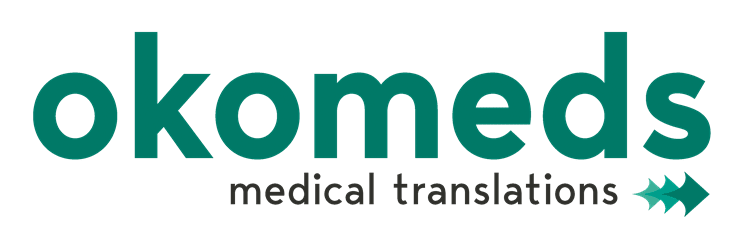
03 Jan Digital health and the medical translation process
The management of the medical translation process can face multiple scenarios for a medical institution. Most of them depend on its size and budget and could be liked with Digital Health. From the intitutional point of view, there are several main steps to be distinguished. The fist one is to have a central source document repository to control and update translations. It might also contain forms or other readily available public domain documents, and a private protected area for patient health information which may require translation.
It is important to register all entries and people using it. With the new technologies it can be available through a folder in the PC’s hard drive of the person in charge of managing translations, a document server accessible through an intranet or a drive in a network.
Disruptive technologies cannot bring change on their own, but they are the first step
What is the meaning of Digital Health?
It involves any problems in the medical-technological universe, that on top of using new technologies require the intervention of the traditional healthcare stakeholders. Therefore it is linked to a cultural change and needs a long-term process to be set up.
It is important to hightline that Digital Health has specially been developed in countries were there was not an adecuate intitutional healthcare in place as a way to compensate the lagunes of the system with technology. We are talking about online medical services companies, projects or startups in LaTam, like Peru, or in South East Asia, as Indonesia or even China.
The second step in the medical translation process is to establish a central translation management
point or a person in charge of managing and coordinating translation tasks. Depending on the intitutional needs it can be an horizontal full or part-time job. In any case, there should be a special procedure to request urgent translations. Depending on the system, the manager will deal with internal departments working with translators, interpreters and proofreaders, or with medicine translation agencies.
Although it is true that disruptive technologies cannot bring change on their own, they are the first step. Once people are familiar AI, IoT, social media, robotics, virtual or augmented reality, health sensors, smartphone apps and 3D printing, among others, the next step is that patients and their families point of view changes. They are empowered to through their access to internet information and the rest of new technologies and as a consequence they do not want to remain passive and dependent from doctors but active in the decision-making process and even monitor data at home.
The next steps in the management of the medical translation process are the need prioritization, determining which types of translations are more commonly requested in the different departments studing their historic needs and using a preemptive approach. And the need to recruit and manage translation internal departments and/or vendors. Deciding between control and investment.
A striking example of Digital Medicine could be deciding not only about surgical robotic instruments, but also whether medical robots will join the healthcare team or not, specially during night hours or when fewer people are working on the floors. Why? Because the decision must not only take into account the available technology, but also patients’ and medical staff’s opinions. New cooperation is needed to make the most of smartphones, digital medical records, internet-based services or health-sensors and open room for the new.

What is Health IT or Health Information Technology?
Health IT is the part of the Information Technology in charge of designing, developing and creating medical information systems for the healthcare industry. Their advantage is that they improve medical efficiency at lower costs, while also improving patient satisfaction. It goes from the institutional adoption of electronic health record (EHR) or electronic medical record (EMR) systems to increasing importance of the personal health record (PHR), maintained by each person, and the health infomation exchange.
The fifth step in the management of the medical translation process is to know the current market rates for translation, DTP and printing work. Market rates vary by by language combination and country. However, this information has been researched and compiled by several organizations as ATA in the US.
The sixth step is negotiating realistic deadlines, taking into account the accepted market standards for translation output in each country (number of source words translated per translator; number of target words edited per editor; and target words final-proofed per proofreader; all of them referred to each business day). Therefore, any emergency translation should be considered very carefully, as on top of higher prices, there is also higher risks, as people are requiered to work quicker.
Health IT is also subject to the inconveniences of informatics. IT issues impact physicians everyday, but in most cases have short-term solutions. However, there can be cyberattacks that can affect public or private Health Services. This is not unheard of and an example of it was the WannaCry scandal in the UK. In a smaller level current IT failures can be life or death when dealing with healthcare systems were monitoring equipment is needed in operations.
To conclude, the seventh and last step in the management of the medical translation process is to determine which resources are needed and maintained to aid the translation process. We are talking about style guides, glossaries or translation memory or even the translation memory exchange.






Sorry, the comment form is closed at this time.